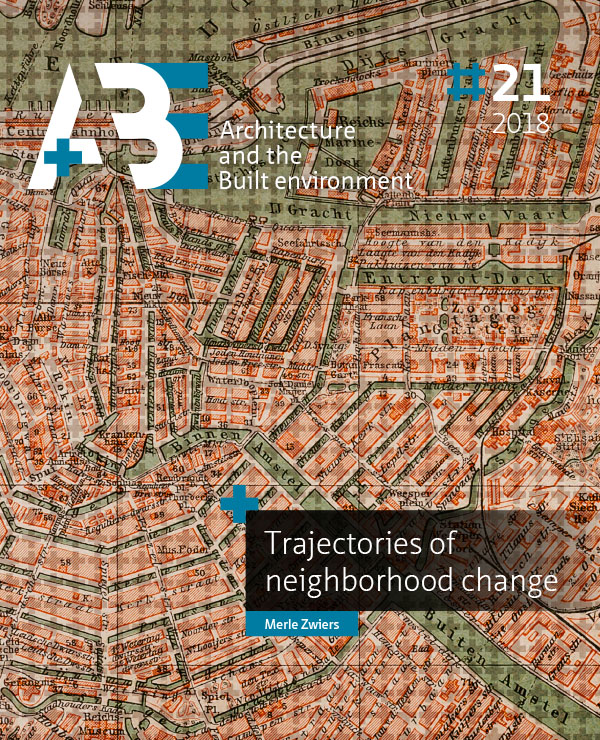The effects of physical restructuring on the socioeconomic status of neighborhoods: Selective migration and upgrading
DOI:
https://doi.org/10.7480/abe.2018.21.3527Abstract
Many European and North American governments have a long tradition of urban restructuring programs to regenerate deprived neighborhoods. The combination of lowquality housing and a variety of socioeconomic problems, such as high crime rates and high unemployment rates, was thought to negatively affect the larger urban area and its residents. On the city level, concentrations of poverty were considered to be detrimental to the economic prosperity of urban regions by reducing the attractiveness of the area to businesses and higher income groups. On the individual level, neighborhood deprivation was thought to have a negative impact on the individual life chances of residents through a lack of network resources and negative role models. Urban restructuring policies therefore aimed to break up concentrations of poverty and to counteract negative neighborhood effects by changing the spatial distribution of disadvantaged residents (VROM, 1997).
In many European countries, the main tool of urban restructuring was housing diversification. Through the demolition or sales of low-quality social housing and the construction of more expensive owner-occupied or private-rented dwellings, policymakers aimed to create a socioeconomic mix of residents in deprived neighborhoods. The in-migration of middle- and high-class households in these neighborhoods was thought to lead to a process of socioeconomic upgrading (Kleinhans, 2004). It was implicitly assumed that these middle- and higher income groups would act as role models and network resources for the original residents, thereby improving theirindividual life chances (Andersson & Musterd, 2005). The socioeconomic upgrading of previously deprived neighborhoods was also thought to have positive spillover effects on nearby neighborhoods, by improving the housing market position, reputation, and attractiveness of the larger geographical area (cf. Deng, 2011; Ellen & Voicu, 2006).
Many scholars have since been critical about urban restructuring. Some have criticized urban restructuring policies for being a form of state-led gentrification (Uitermark & Bosker, 2014). Similar to other processes of gentrification, state-led gentrification arguably leads to displacement as the demolition and sales of social housing forces disadvantaged residents to relocate elsewhere (Boterman & Van Gent, 2014; Uitermark & Bosker, 2014). In addition, the construction of more expensive dwellings stimulates exclusionary displacement, making it financially difficult for low-income residents to move into the neighborhood (Boterman & Van Gent, 2014; Marcuse, 1986). Others have been critical about the effectiveness of urban restructuring in actually achieving neighborhood change (e.g. Lawless, 2011; Permentier et al., 2013; Tunstall, 2016; Wilson, 2013). It has been argued that although urban restructuring has led to a physical upgrading of neighborhoods and a diversified population composition as a result of selective migration, it has failed to improve the lives of disadvantaged residents and it did not lead to significant changes in the socioeconomic status of neighborhoods (cf. Bailey & Livingston, 2008; Jivraj, 2008; Permentier et al., 2013; Tunstall, 2016; Wilson, 2013).
The present study focuses on the extent to which urban restructuring has stimulated socioeconomic neighborhood change as a result of changes in the population composition in the 31 largest Dutch cities. While many studies have extensively analyzed the effects of urban restructuring on individual outcomes (e.g. Bolt & Van Kempen, 2010b; Manley et al., 2012; Miltenburg, 2017), it has been much more difficult to identify the effects of urban restructuring on area-based outcomes (Lawless, 2011). First, urban restructuring programs were both people-based and place-based programs that entailed a number of different interventions over time that also differed between neighborhoods and cities in size and scope. This implies that it has been difficult to ‘measure’ urban restructuring and to identify control neighborhoods with similar socioeconomic characteristics that did not experience any urban restructuring (Lawless, 2011). The present study overcomes this limitation by focusing on the share of demolished and newly constructed dwellings as the main indicator of urban restructuring. We use propensity score matching to compare neighborhoods that experienced physical restructuring to neighborhoods with similar socioeconomic characteristics that did not, allowing us to analyze the causal effect of policy on socioeconomic neighborhood change.
Second, many studies investigating the effects of physical restructuring have focused on relatively large administrative areas, which means that the effects have to be large to change the trajectory of the entire neighborhood. We therefore analyze neighborhood change on a relatively low spatial scale, i.e. 500 by 500 meter grids, which allows us to better capture the effects of very localized demolition and new construction.
Third, research has shown that significant changes take time to have effect (Meen et al., 2013; Tunstall, 2016; Zwiers et al., 2017; Zwiers et al., 2018a). Prior studies on urban restructuring in the Netherlands have been limited by a relatively short-time perspective, ranging from one to six years (e.g. Permentier et al., 2013; Wittebrood & Van Dijk, 2007), while it is possible that the effects of physical restructuring will only be visible over a much longer period of time. We therefore focus on neighborhood change over a 15-year period, providing insight in the effects of physical change over and beyond the course of the restructuring programs and the extent to which restructured neighborhoods have been successful in maintaining and attracting middle- and highincome groups over time.
This study focuses on neighborhood socioeconomic change in the 31 largest Dutch cities between 1999 and 2013. We compare changes in the median neighborhood income between restructured neighborhoods, control neighborhoods, adjacent neighborhoods, and all other neighborhoods. We find that restructured neighborhoods have experienced the highest increase in the median neighborhood income. We analyze to what extent these changes can be explained by a changed population composition or neighborhood change in-situ. Changes to the housing stock as a result of urban restructuring seems to attract and maintain middle- and high-income households in previously deprived neighborhoods. However, these effects are very local and do not extent to adjacent neighborhoods. These findings contribute to our understanding of long-term neighborhood change and illustrate that large-scale shocks such as physical restructuring can change the trajectory of a neighborhood.

